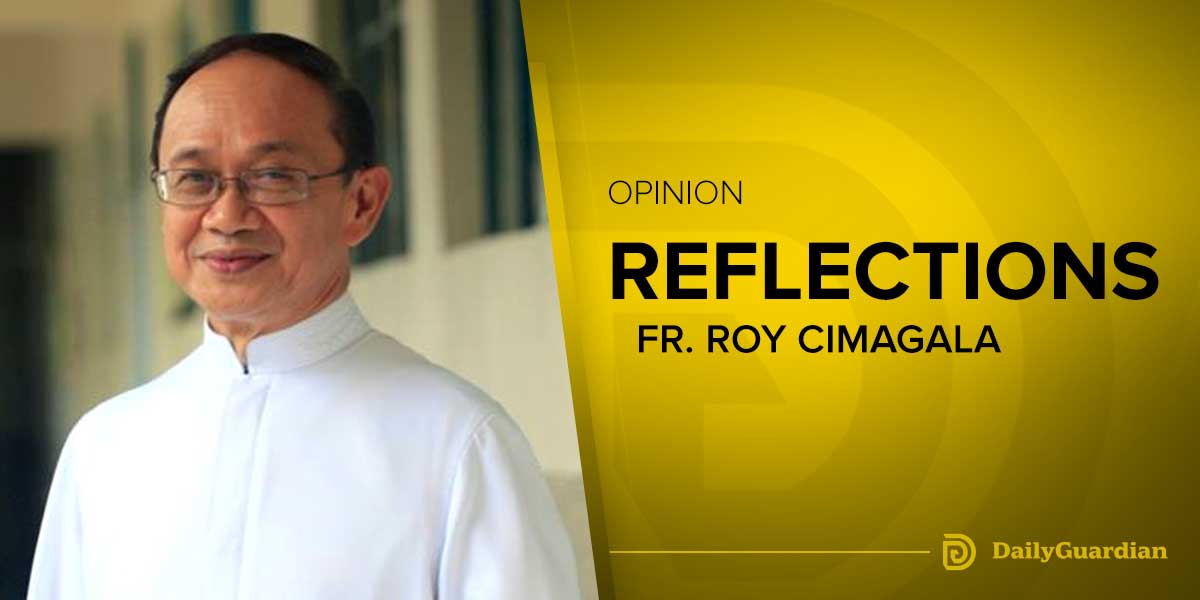Results of the Q3 2022 Senior Bank Loan Officers’ Survey (SLOS)[1],[2] indicated that a larger proportion of respondents maintained their overall lending standards for loans to businesses and households based on the modal approach.[3]
Meanwhile, results from the diffusion index (DI) method[4],[5] presented mixed trends as credit standards for firms generally reflected a net tightening while loan standards for households revealed a net easing.
LENDING TO ENTERPRISES
The Q3 2022 modal-based results showed that a majority of the bank respondents (77.1 percent) specified broadly unchanged credit standards for loans to enterprises.
On the other hand, the DI approach indicated a net tightening of overall credit standards across all borrower firm sizes.
Participating banks also reported that the overall tightening of credit standards was driven by the following factors: the deterioration of borrowers’ profiles, reduced risk tolerance, a more uncertain economic outlook, and stricter financial system regulations.
On specific lending standards, the net tightening of overall credit standards was observed through increased use of interest rate floors, stricter collateral requirements and loan covenants, shortened loan maturity, and wider loan margins.
For Q4 2022, a larger number of the surveyed banks anticipate generally unchanged credit standards for businesses.
By contrast, the DI-based results reflected expectations of a net tightening of lending standards due to the following factors: decline in tolerance for risk, deterioration in borrowers’ profiles, and less optimistic economic outlook.
LENDING TO HOUSEHOLDS
Latest results from the Q3 2022 SLOS indicate that most of the respondent banks (64.9 percent) retained their credit standards for loans extended to households.
However, a net easing of overall credit standards for consumer loans was observed based from the DI approach, which was attributed by respondents to an increased tolerance for risk, improvement in borrowers’ profiles and profitability of banks’ portfolios, as well as less uncertain economic prospects.
In terms of specific credit standards, net easing was shown in the longer loan maturity of housing loans and personal/salary loans as well as increased size of credit lines for credit card loans.
On one hand, net tightening of lending standards for consumer loans was revealed through tighter collateral requirements and loan covenants, wider loan margins, reduced size of credit lines (particularly for housing loans, auto loans, and personal/salary loans), and increased use of interest rate floors.
For the following quarter, the modal approach pointed to a higher percentage of bank respondents anticipating generally unchanged loan standards.
Meanwhile, the DI-based results continue to present bank respondents’ expectations of net easing in overall credit standards for households driven by improvement in borrowers’ profiles and profitability of banks’ portfolios, as well as increased risk tolerance.
LOAN DEMAND
The Q3 2022 survey results pointed to the majority of bank respondents indicating broadly steady credit demand from both firms and consumers, based on the modal approach.
Meanwhile, results from the DI method indicated a net rise in overall loan demand from across all firm classifications and main categories of household loans (namely housing loans, credit card loans, and personal/salary loans).
The general net increase in credit demand from enterprises were reportedly due to improvement in customers’ economic outlook and increase in customer inventory and accounts receivable financing needs.
Similarly, the overall net rise in consumer loan demand was associated with higher household consumption, lower income prospects, and banks’ more attractive financing terms.
Over the next quarter, nearly half of the surveyed banks responded with expectations of generally unchanged loan demand from businesses (49.0 percent) while a higher proportion of respondents anticipate steady demand for credit from consumers (65.8 percent).
Based on the DI method, banks expect a net increase in overall demand for loans from businesses in Q4 2022 due to the anticipated improvement in customers’ economic prospects as well as increased customer inventory and accounts receivable financing needs.
Likewise, a net rise in overall credit demand from consumers is anticipated by surveyed banks in the next quarter largely due to higher household consumption and more attractive financing terms offered by banks.
While the DI approach generally showed sustained expectations of a net increase in loan demand from enterprises and consumers, it should be noted that DI indicators reflected a slowdown in loan demand compared to the previous quarter amid weakened business and consumer confidence.[6]
COMMERCIAL REAL ESTATE LOANS
Results of the Q3 2022 SLOS indicated that a larger proportion of bank participants (73.5 percent) responded with unchanged overall loan standards for commercial real estate loans (CRELs).
Meanwhile, the DI-based approach showed a net tightening of credit standards for CRELs in Q3 2022 for the 27th consecutive quarter mainly driven by decline in risk tolerance, deterioration in borrowers’ profiles, and more pessimistic economic expectations.
Over the next quarter, the modal results showed that majority of respondents continue to expect unchanged lending standards for CRELs while the DI-based approach pointed to respondents’ anticipations of net tighter loan standards for CRELs.
On credit demand for CRELs in Q3 2022, a majority of the respondent banks indicated seeing unchanged overall demand based on the modal results.
Meanwhile, the DI approach showed a net increase in loan demand owing mainly to the improvement in customers’ economic outlook, banks’ more attractive financing terms, and lack of alternative sources of funds.
For Q4 2022, modal-based results reflected respondents’ anticipations of maintained loan demand for CRELs. Meanwhile, the DI results pointed to an expected net increase in loan demand for Q4 2022 amid clients’ more optimistic economic outlook and banks’ more attractive financing terms.
RESIDENTIAL REAL ESTATE LOANS
In the case of housing loans in Q3 2022, most of the surveyed banks (71.9 percent) responded with generally unchanged credit standards as indicated by the modal approach.
Similar to the previous survey, the DI-based results pointed to a net easing of credit standards for residential real estate loans which was attributed to increased risk tolerance, less uncertain economic prospects, and an improvement in borrowers’ profiles and profitability of banks’ portfolios.
For Q4 2022, a larger proportion of respondent banks expect lending standards for housing loans to be maintained, while DI-based values showed an outlook of net easing of housing loan standards.
In Q3 2022, the majority of bank respondents noted a broadly steady credit demand for housing loans while anticipating the same for the following quarter.
Meanwhile, the DI approach showed a net rise in residential real estate loan demand for both the current quarter and the next quarter driven mainly by banks’ more attractive financing terms and higher housing investment.
[1] The BSP has been conducting the SLOS since 2009 to gain a better understanding of banks’ lending behavior, which is an important indicator of the strength of credit activity in the country. The survey also helps the BSP assess the robustness of credit demand, prevailing conditions in asset markets, and the overall strength of bank lending as a transmission channel of monetary policy. The survey consists of questions on loan officers’ perceptions relating to the overall credit standards of their respective banks, as well as to factors affecting the supply of and demand for loans to both enterprises and households. This is similar to the surveys of bank lending standards conducted by other central banks, such as the US Federal Reserve, the European Central Bank, the Bank of England, the Bank of Canada, and the Bank of Japan, among others.
[2] The analysis of the results of the SLOS focuses on the quarter-on-quarter changes in the perception of respondent banks. Starting with the Q3 2018 survey round, the BSP expanded the coverage of the survey to include new foreign commercial banks and large thrift banks. Prior to Q3 2018, the survey covered only universal and commercial banks. For the Q3 2022 survey, questionnaires were sent to a total of 64 banks (42 universal and commercial banks and 22 thrift banks), 51 of whom sent in their responses, showing a response rate of 79.7 percent. It is important to note that the responses for the Q3 2022 SLOS were gathered between 1 September – 11 October 2022.
[3] In the modal approach, the results of the survey are analyzed by looking at the option with the highest share of responses.
[4] In the DI approach, a positive DI for credit standards indicates that the proportion of respondent banks that have tightened their credit standards exceeds those that eased (“net tightening”), whereas a negative DI for credit standards indicates that more respondent banks have eased their credit standards compared to those that tightened (“net easing”).
[5] During the Q1 2010 to Q4 2012 survey rounds, the BSP used the DI approach in the analysis of survey results. Beginning in Q1 2013, the BSP used both the modal DI approaches in assessing the results of the survey.
[6] Results of the BSP Q3 2022 Business Expectations Survey (BES) reported that business confidence declined in Q3 2022 which was attributed by respondents to: (a) higher inflation (i.e., faster rise in prices of consumer goods, services, raw materials and production costs), (b) rising fuel prices, (c) decline in sales and demand, (d) peso depreciation and (e) the continuing public health threat of COVID-19. Similarly, the BSP Q3 2022 Consumer Expectations Survey (CES) indicated more pessimistic consumer sentiment largely due to respondents’ concerns over the: (a) faster increase in the prices of goods and higher household expenses, (b) low income, and (c) fewer available jobs and working family members.





















